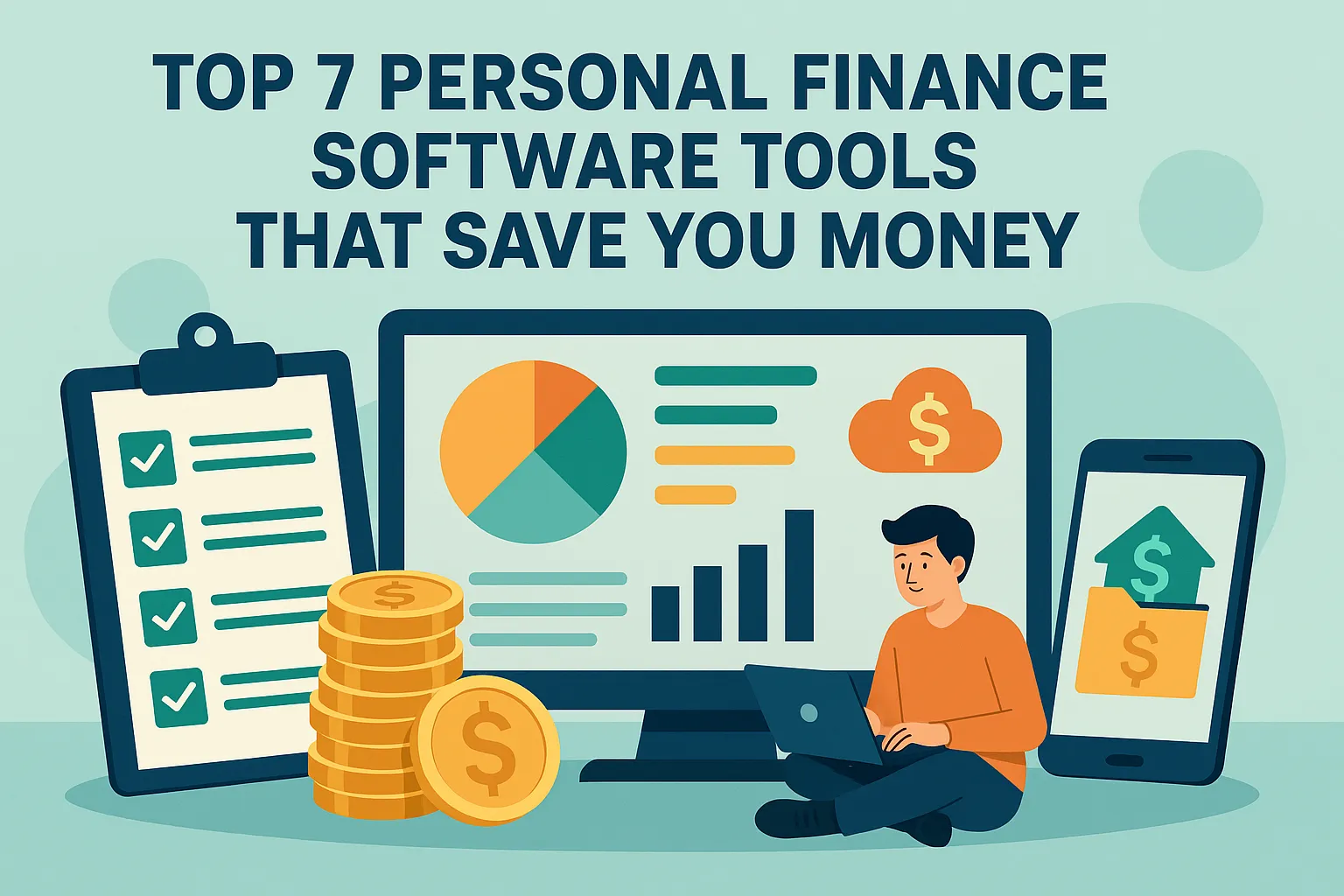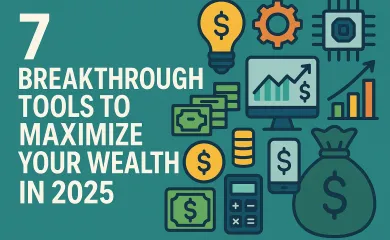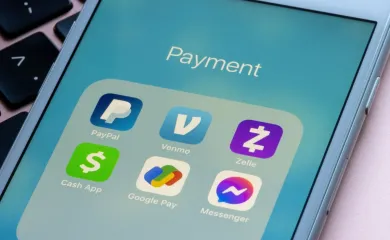Personal Finance Software That Actually Saves You Money [Expert Tested]

Nearly half of American households carry credit card debt, and 37% wouldn't be able to cover a $400 unexpected expense with cash. Personal finance software offers a practical solution to these common money challenges.
We've tested and reviewed the best personal finance management software available today to help you take control of your finances. These powerful tools do more than just track spending - they categorize expenses, monitor financial goals, and even provide alerts for upcoming bills. Furthermore, many of these applications offer free versions while still maintaining robust security protocols to protect your sensitive data.
In this article, I'll share our expert analysis of seven money management software options that actually save you money. We've evaluated each personal finance software based on 18 data points including user ratings, costs, and security features to help you find the perfect tool for your financial situation.
Top 7 Personal Finance Software Tools That Save You Money
Finding effective personal finance software requires considering both features and cost-effectiveness. After extensive testing, these seven tools stand out for their ability to help users save money through better financial management.
1. YNAB (You Need A Budget)
YNAB operates on a zero-based budgeting philosophy where every dollar has a purpose. This approach helps users become more intentional with spending and saving. The app follows four key rules: give every dollar a job, embrace true expenses, roll with the punches, and age your money.
The results speak for themselves - the average user saves $6,000 within their first year of using YNAB. For those struggling with credit card debt, YNAB's focused approach has helped users pay off an average of $8,000 in debt through targeted paydown challenges.
At $14.99 monthly or $109 annually, YNAB offers a generous 34-day free trial, and college students receive a full year free with proof of enrollment.
2. Quicken Classic
As the oldest and most established personal finance application, Quicken Classic remains highly relevant with its comprehensive toolset. Available in three tiers - Deluxe ($71.88/year), Premier ($95.88/year), and Business & Personal ($131.88/year) - it offers powerful budgeting, bill payment, and investment tracking features.
Quicken Classic excels with its detailed retirement planning tools and debt reduction planner. The Lifetime Planner helps you project various financial scenarios to secure your future. Moreover, it's the only personal finance app that allows direct bill payment through the software.
3. Simplifi by Quicken
For those intimidated by Quicken Classic's complexity, Simplifi offers a streamlined alternative starting at just $3.99 monthly. This mobile-friendly option maintains core functionalities without overwhelming users.
Instead of traditional budgeting, Simplifi's approach starts with your income, subtracts bills and subscriptions, then generates a personalized Spending Plan that adjusts automatically as you spend. This innovative feature shows you exactly how much is available for daily expenses after accounting for necessities.
4. RocketMoney
RocketMoney distinguishes itself with powerful subscription management capabilities. The app automatically identifies recurring charges across your accounts, making it easy to spot and cancel unwanted subscriptions directly through the platform.
Beyond subscription management, RocketMoney offers customizable spending categories and bill negotiation services. The premium version ($6-$12 monthly) provides automated savings transfers to help you reach financial goals more efficiently.
5. Empower Personal Dashboard
Empower (formerly Personal Capital) offers comprehensive financial monitoring completely free of charge. Its standout feature is the investment checkup tool that examines your portfolio allocation and identifies opportunities to optimize returns while reducing risk.
The retirement planning calculator runs 5,000 different simulations to determine the likelihood of your financial plan succeeding. This makes Empower particularly valuable for users focused on long-term wealth building and investment management.
6. Goodbudget
Goodbudget modernizes the traditional envelope budgeting system that has helped generations control spending. The app divides your income into digital "envelopes" for different spending categories.
The free version allows 10 regular envelopes, adequate for basic budgeting. For $10 monthly or $80 annually, the Plus plan offers unlimited envelopes and enhanced features. Unlike most apps, Goodbudget doesn't automatically sync with accounts - this intentional manual entry process encourages more mindful spending awareness.
7. PocketGuard
PocketGuard shines with its "In My Pocket" feature, which shows precisely how much discretionary spending money remains after accounting for bills, savings goals, and necessary expenses. This clarity proves especially valuable for chronic overspenders.
The app uses AI algorithms to identify recurring merchants and schedule them in your calendar. With over 825,000 users reporting improved financial habits, PocketGuard offers both free and premium ($12.99 monthly/$74.99 annually) options depending on your needs.
Key Features That Make These Tools Effective
What separates effective personal finance software from mediocre options? The answer lies in powerful features that work together to transform financial habits. Let's examine the critical functionality that makes these tools worth your investment.
Budget tracking and categorization
The foundation of any quality personal finance software is accurate expense tracking. Today's leading applications employ machine learning algorithms that automatically categorize transactions with remarkable accuracy—often exceeding 85% according to user reviews. This AI-driven approach reduces manual effort and increases long-term user engagement by 37%.
Advanced categorization capabilities allow for customization based on your unique financial situation. For instance, Quicken Premier provides detailed reporting with customizable charts that go beyond the broad snapshots offered by basic budgeting apps. This granularity helps identify spending patterns that might otherwise remain hidden.
Receipt scanning functionality in premium applications extracts merchant information and itemized expenses from photographs, automatically populating transaction records with enhanced data. Additionally, these tools sync with thousands of financial institutions, ensuring your spending data remains comprehensive and up-to-date.
Bill reminders and payment tracking
Late fees can silently drain your finances, but effective bill management features help eliminate this unnecessary expense. According to the Consumer Financial Protection Bureau, automated bill reminders have contributed to a 23% reduction in late payment fees among regular app users.
Applications like Quicken allow you to set up automatic connections to online billers or manually enter offline bills from providers who don't bill electronically. The most sophisticated systems send contextual notifications about upcoming due dates with information about available funds and projected account balances after payment.
Bill tracking features often include the ability to mark bills as paid directly within notifications without opening the app, significantly streamlining financial management. Several platforms also include payment history tracking and recurring bill identification to help spot unusual changes in billing amounts.
Goal setting and progress monitoring
Effective goal-setting functionality transforms abstract financial aspirations into concrete, achievable targets. Visual progress tracking increases goal achievement rates by up to 42%, according to research from the Financial Planning Association.
The best tools allow you to:
- Set multiple, concurrent savings goals with different timelines
- Calculate required monthly contributions automatically
- Automate transfers to dedicated savings based on rules
- Adjust contribution schedules as circumstances change
These applications implement mathematical formulas to determine exactly how much you need to save at regular intervals to reach your targets. This calculated approach removes guesswork and increases accountability.
Investment and net worth tracking
Comprehensive investment tracking capabilities have become increasingly sophisticated. Platforms like Quicken Premier provide real-time market updates, performance analysis tools, and tax optimization features.
The most powerful applications apply Modern Portfolio Theory principles to assess risk-adjusted returns using metrics like the Sharpe Ratio. They automatically monitor dividends, track capital gains, and provide tax impact analysis to optimize your investment strategy.
Net worth tracking gives you a holistic view of your financial health by combining assets and liabilities. Programs like Empower connect to everything from bank accounts to real estate holdings through Zillow integration, creating an accurate real-time picture of your overall financial position.
Mobile and desktop accessibility
Today's financial management happens across multiple devices. According to Deloitte, users access their finance apps on an average of 2.7 different devices, making cross-platform availability essential.
Leading financial software offers consistent experiences across:
- iOS and Android mobile platforms
- Web browsers for desktop access
- Tablets with optimized interfaces
- Wearable devices for quick notifications
The most advanced applications implement real-time synchronization, ensuring updates made on one device appear instantly across all platforms. This seamless integration ensures you always have access to critical financial information, regardless of which device you're using.
How These Tools Actually Help You Save Money
The true value of personal finance software lies in its ability to transform abstract financial concepts into tangible savings. By examining how these tools work in practical scenarios, we can see exactly how they put money back in your pocket.
Spotting unnecessary subscriptions
In 2022, Americans estimated they spent $86 monthly on subscriptions and memberships, yet the actual amount was closer to $219. This dramatic difference highlights how easy it is to lose track of recurring charges. Personal finance software excels at identifying these financial blind spots.
Rocket Money (formerly Truebill) has become particularly effective at subscription management, with the company reporting that 80% of users save money by finding and canceling unwanted subscriptions. These tools automatically flag recurring charges across all connected accounts, making forgotten free trials and unused services immediately visible.
For this reason, many users discover they're paying for multiple streaming services with overlapping content or maintaining subscriptions to services they rarely use. Consequently, the average user can reclaim hundreds of dollars annually just by eliminating redundant or forgotten subscriptions.
Avoiding late fees with reminders
Late payments don't just damage credit scores—they directly impact your wallet. One financial planner documented a client in her 70s whose Medicare supplement policy was canceled due to missed payments, resulting in approximately $250 more in annual premiums plus $500 in additional out-of-pocket prescription costs.
Automated bill payment features primarily serve to prevent these costly oversights. Personal finance applications send alerts before payments are due and can even process payments directly through the platform in some cases. Notably, this becomes increasingly valuable as we age or during busy periods when bills might otherwise slip through the cracks.
Setting and sticking to spending limits
Budget categories become far more effective when coupled with real-time monitoring. When approaching your monthly entertainment budget limit, for instance, these applications send immediate notifications, allowing you to adjust your spending before it's too late.
After tracking spending for a few months, users gain fresh insights they can use to improve their budgets. Many discover specific categories where they consistently overspend, enabling targeted adjustments that result in meaningful savings.
Visualizing financial goals
The psychology behind goal achievement is powerful, which is why leading personal finance software incorporates strong visualization tools. These applications break larger financial targets into manageable milestones, making seemingly impossible goals attainable.
Visual representations of progress, such as progress bars and charts, provide motivation and encouragement. By seeing exactly how today's spending decisions impact long-term objectives, users make more conscious choices about their money. Furthermore, this visibility helps maintain consistency over time, transforming occasional good financial decisions into lasting habits that generate significant wealth.
Free vs Paid: Which Option Is Right for You?
Deciding between free and premium personal finance software depends on your financial complexity and goals. Many users wonder if paying for these tools actually yields a return on investment.
What you get with free versions
Free personal finance tools provide essential functionality without impacting your budget. Most free versions offer:
- Manual expense tracking and basic budgeting capabilities
- Limited number of spending categories and accounts
- Fundamental spending analysis through charts and reports
- Basic goal setting features
NerdWallet stands out as a comprehensive free option, combining bank account imports and transaction management with excellent credit score information. Meanwhile, free versions of Goodbudget limit users to 20 envelopes (categories), one account, and provide community support rather than dedicated customer service.
Nevertheless, free tools typically generate revenue through targeted advertisements for financial products like credit cards or savings accounts. Although these ads help keep the service free, they might distract from your financial objectives.
When to consider upgrading
Upgrade to premium versions as your financial situation grows more complex. Consider paying when you need:
- Unlimited financial account connections (most free versions limit these)
- Customizable transaction categories beyond basic presets
- Advanced debt payoff planning and strategies
- Comprehensive reporting and analytics
PocketGuard's free plan, for example, restricts users to one cash account and two linked financial accounts with limited spending categories. If you manage multiple accounts or need detailed categorization, their premium version at $12.99 monthly provides unlimited bank connections and customizable categories.
Cost-benefit analysis of premium features
Examining whether premium features justify their cost requires honest assessment of your usage patterns. For instance, YNAB costs $14.99 monthly but claims the average user saves $6,000 in their first year—a significant return on the $180 annual investment.
In contrast, Goodbudget Plus ($10 monthly) offers unlimited envelopes compared to the free version's 20 envelopes. This upgrade makes sense primarily if you micromanage numerous spending categories.
Furthermore, paid tools typically provide enhanced security through data encryption and dedicated support teams. If managing sensitive financial information or requiring assistance with complex financial scenarios, this additional protection may justify the expense despite excellent free alternatives being available.
Are Personal Finance Apps Safe to Use?
Security concerns often make users hesitant about adopting personal finance software. Indeed, these applications handle sensitive financial information, making them potential targets for cybercriminals.
Encryption and data protection
Strong encryption serves as the foundation of financial app security. The best personal finance software uses AES-256 encryption, the same standard employed by government agencies. This encryption level would require billions of years to breach through brute force methods.
Effective money management software protects your data in two critical states:
- Data at rest - information stored on devices or in cloud storage
- Data in transit - information moving between your device and servers
Most reputable financial applications implement end-to-end encryption, ensuring your data remains scrambled from the moment it leaves your device until it reaches its destination.
Third-party integrations like Plaid
Many personal finance applications utilize services like Plaid to securely connect with your bank accounts. Plaid functions as an intermediary, employing encryption to safeguard information during transmission between your bank and financial apps.
Plaid verifies identity through multi-factor authentication, with almost all logins requiring this additional security layer. This service can access various data points including transaction history and account balances, yet maintains strict policies against selling user information.
Best practices for user security
Even with robust encryption, your security practices significantly impact overall protection. Consider implementing these safeguards:
- Create unique, complex passwords for each financial application
- Enable two-factor authentication, which stops approximately 99% of credential-based attacks
- Avoid using financial apps on public WiFi networks
- Regularly update all devices and applications
- Set privacy controls to their highest tolerable levels
Ultimately, personal finance software developers understand that security breaches would devastate their reputation. Therefore, most invest heavily in security measures, regularly conducting independent audits of their systems. By selecting reputable applications and following security best practices, you can safely enjoy the benefits of personal finance software.
Conclusion
Personal finance software has evolved from simple expense trackers into powerful tools that actively help users build wealth. Throughout this article, we've examined seven exceptional applications that offer unique approaches to money management while providing tangible financial benefits. Whether you prefer YNAB's zero-based budgeting philosophy or Empower's sophisticated investment analysis, these tools deliver real value by transforming how you interact with your finances.
The most effective personal finance applications share several critical features. First, they provide accurate transaction categorization and budget tracking. Additionally, they offer timely bill payment reminders, visual goal progress tracking, and comprehensive investment monitoring. The combination of these capabilities creates a financial ecosystem that not only organizes your money but actively helps you save more of it.
Undoubtedly, the right personal finance software will pay for itself many times over. Users consistently report discovering forgotten subscriptions, avoiding late fees, and making more conscious spending decisions after implementing these tools. The psychological impact of visualizing financial goals also proves remarkably powerful in maintaining motivation during challenging financial periods.
While free versions offer substantial functionality, premium features often justify their cost for those with complex financial situations. Before upgrading, carefully assess whether additional capabilities align with your specific needs and financial goals. Likewise, security concerns should factor into your decision-making process, though most reputable applications employ bank-level encryption and strict data protection protocols.
The journey toward financial wellness requires both the right tools and consistent habits. These personal finance applications serve as powerful allies in this process, enabling you to make informed decisions based on accurate data rather than assumptions about your money. Choose the option that aligns with your specific financial situation, and you'll likely find yourself wondering how you ever managed your finances without it.


